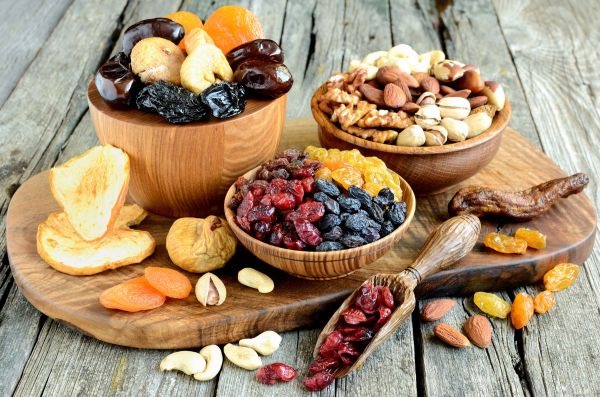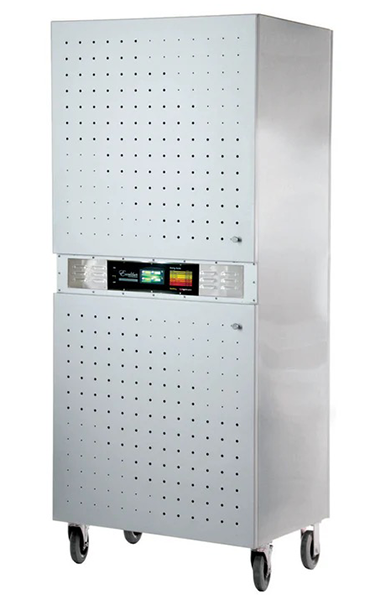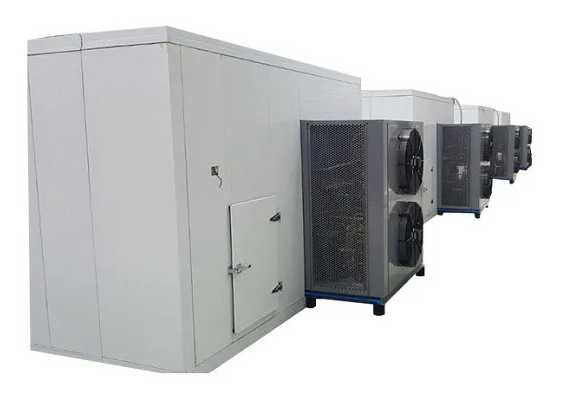
Content Menu
● Understanding Vented Dryers
>> What is a Vented Dryer?
>> Advantages of Vented Dryers
● Understanding Heat Pump Dryers
>> What is a Heat Pump Dryer?
>> Advantages of Heat Pump Dryers
>> Disadvantages of Heat Pump Dryers
● Comparing Vented vs. Heat Pump Dryers
● Choosing the Right Dryer for Small Spaces
● The Role of Food Dehydrators
>> What is a Food Dehydrator?
>> Benefits of Using Food Dehydrators
● How Food Dehydrators Work
● Conclusion
● FAQ
>> 1. What is the main difference between vented and heat pump dryers?
>> 2. Are heat pump dryers worth the investment?
>> 3. Can I use a heat pump dryer in any space?
>> 4. How long does it take to dry clothes in a heat pump dryer?
>> 5. What foods can I dehydrate using a food dehydrator?
When it comes to drying food, selecting the right dryer for small spaces can be a challenging task. Two popular options are vented dryers and heat pump dryers. Each type has its unique features, advantages, and disadvantages. In this article, we will explore both types of dryers in detail, focusing on their suitability for small spaces, energy efficiency, and overall performance. We will also delve into the world of food dehydrators, which are essential for preserving food while maintaining its nutritional value.

Understanding Vented Dryers
What is a Vented Dryer?
A vented dryer is a traditional type of dryer that operates by drawing air from the room, heating it, and then blowing it into the drum where the clothes are. The moisture-laden air is expelled outside through a vent, hence the name "vented dryer." This process requires an external venting system to function properly.
Advantages of Vented Dryers
- Faster Drying Time: Vented dryers typically dry clothes faster than heat pump dryers due to their high heat output. This can be especially beneficial for large families or individuals who frequently wash large loads of laundry.
- Lower Initial Cost: They are generally less expensive to purchase compared to heat pump dryers. This makes them an attractive option for those on a budget or looking for immediate solutions.
- Simplicity: Vented dryers have straightforward designs and are easy to operate. Most models come with basic settings that allow users to select drying times and temperatures without complex programming.
- Wide Availability: Vented dryers are widely available in various sizes and styles, making it easier to find one that fits your specific needs.
Disadvantages of Vented Dryers
- Energy Inefficiency: They consume more energy because they continuously draw in and heat new air. This can lead to higher electricity bills over time.
- Space Requirements: Vented dryers require proper ventilation, which can be a limitation in small spaces. If you live in an apartment or a home without an external wall, installing a vented dryer may not be feasible.
- Moisture Release: They can increase humidity levels indoors if not properly vented. This can lead to issues such as mold growth or damage to walls and furniture.
Understanding Heat Pump Dryers
What is a Heat Pump Dryer?
Heat pump dryers use a different technology than vented dryers. They recycle hot air within the drum and use a heat exchanger to remove moisture from the air. The moisture is collected in a reservoir or drained away, making them more energy-efficient.
Advantages of Heat Pump Dryers
- Energy Efficiency: Heat pump dryers use significantly less energy than vented dryers, making them cost-effective in the long run. They can reduce your energy consumption by up to 50%, which is particularly advantageous in regions with high electricity rates.
- Compact Design: Many heat pump dryers have a smaller footprint and do not require external venting, making them ideal for small spaces. This allows you to place them in closets or laundry rooms without worrying about ventilation issues.
- Gentler on Clothes: They operate at lower temperatures, which can help prolong the life of fabrics. This is especially important for delicate items that may shrink or get damaged in high heat.
- Versatile Installation Options: Since they do not require external vents, heat pump dryers can be installed almost anywhere in your home, providing flexibility in layout design.
Disadvantages of Heat Pump Dryers
- Longer Drying Time: They generally take longer to dry clothes compared to vented dryers. While this may not be an issue for some users, those who need quick turnaround times might find this inconvenient.
- Higher Initial Cost: The upfront cost of heat pump dryers can be higher than that of vented models. However, this cost can be offset by savings on energy bills over time.
- Maintenance Needs: They require regular cleaning of filters and condensate tanks to ensure optimal performance. Neglecting maintenance can lead to reduced efficiency and potential breakdowns.

Comparing Vented vs. Heat Pump Dryers
| Feature | Vented Dryer | Heat Pump Dryer |
| Energy Efficiency | Less efficient | Highly efficient |
| Initial Cost | Lower | Higher |
| Drying Time | Faster | Slower |
| Space Requirements | Requires external venting | Compact; no external vent needed |
| Moisture Control | Releases moisture outdoors | Collects moisture internally |
Choosing the Right Dryer for Small Spaces
When deciding between a vented and a heat pump dryer for small spaces, consider the following factors:
1. Space Availability: If you have limited space and cannot install an external vent, a heat pump dryer is likely your best option. Their compact designs make them suitable for apartments or small homes where every square foot counts.
2. Energy Costs: If you are concerned about energy bills, investing in a heat pump dryer may save you money over time despite its higher initial cost. Consider your local energy rates and how often you do laundry when making this decision.
3. Drying Needs: If you need quick drying times for large loads frequently, a vented dryer may be more suitable. For example, if you have children who go through multiple outfits daily, the speed of a vented dryer might be more appealing.
4. Humidity Levels: Consider how much humidity your living space can handle; if ventilation is an issue, opt for a heat pump dryer. High humidity levels can lead to discomfort and potential health issues over time.
5. Fabric Care: If you often dry delicate fabrics, a heat pump dryer may be gentler on your clothes due to its lower drying temperatures. This feature helps prevent shrinking and damage that might occur with traditional drying methods.
The Role of Food Dehydrators
In addition to clothing dryers, food dehydrators play an essential role in preserving food by removing moisture while maintaining nutritional value.
What is a Food Dehydrator?
A food dehydrator is an appliance designed to remove moisture from food items through controlled airflow and temperature settings. This process helps inhibit bacterial growth and spoilage while retaining flavors and nutrients.
Benefits of Using Food Dehydrators
- Nutritional Preservation: Dehydration retains vitamins and minerals better than other preservation methods like canning or freezing. For instance, dried fruits maintain much of their vitamin content compared to canned versions that may lose nutrients during processing.
- Flavor Enhancement: Concentrating flavors through dehydration can enhance the taste of fruits, vegetables, and meats. Dried tomatoes or herbs can provide intense flavors that elevate dishes without adding extra calories or preservatives.
- Versatility: Food dehydrators can be used for various foods including fruits (like apples and bananas), vegetables (like tomatoes and peppers), herbs (like basil), jerky (made from lean meats), and even yogurt (for healthy snacks).
- Cost Savings: By buying fruits and vegetables in bulk when they are in season and dehydrating them at home, you can save money while enjoying healthy snacks year-round.
- Convenience: Dried foods have long shelf lives and are easy to store without refrigeration. This makes them great options for camping trips or emergency preparedness kits.
How Food Dehydrators Work
Food dehydrators work by circulating warm air around food items placed on trays within the machine. The temperature settings vary depending on what you're dehydrating:
- For fruits like apples or peaches: Typically set between 135°F - 145°F (57°C - 63°C).
- For vegetables like carrots or bell peppers: Usually set between 125°F - 135°F (52°C - 57°C).
- For meats: When making jerky, temperatures should reach at least 160°F (71°C) initially before lowering for drying purposes.
The process usually takes several hours depending on the type of food being dried; however, many modern dehydrators come equipped with timers that allow users to set drying times according to their preferences.
Conclusion
Choosing between a vented dryer and a heat pump dryer ultimately depends on your specific needs and circumstances. For those with limited space who prioritize energy efficiency and gentle drying capabilities, heat pump dryers are an excellent choice. Conversely, if quick drying times are essential and space allows for proper ventilation, vented dryers may be preferable.
Additionally, understanding the benefits of food dehydrators can complement your kitchen appliances by providing healthy snack options while preserving food effectively.
In summary:
- Vented dryers offer faster drying but require more space.
- Heat pump dryers are energy-efficient and compact but take longer to dry clothes.
By evaluating these factors carefully, you can make an informed decision that best suits your lifestyle and space constraints while also considering how food dehydrators can enhance your culinary experience at home.

FAQ
1. What is the main difference between vented and heat pump dryers?
The main difference lies in their operation: vented dryers expel moist air outside while heat pump dryers recycle hot air within the drum to remove moisture without needing external ventilation.
2. Are heat pump dryers worth the investment?
Yes, although they have a higher initial cost, their energy efficiency leads to lower operating costs over time, making them cost-effective in the long run.
3. Can I use a heat pump dryer in any space?
Heat pump dryers do not require external ventilation, making them suitable for small spaces or apartments where traditional vented options may not fit.
4. How long does it take to dry clothes in a heat pump dryer?
Typically, it takes longer than in vented dryers—about 2 to 3 hours depending on load size and fabric type—but they are gentler on clothes due to lower drying temperatures.
5. What foods can I dehydrate using a food dehydrator?
You can dehydrate various foods including fruits (like apples and bananas), vegetables (like tomatoes and peppers), herbs (like basil), meats (for jerky), and even yogurt for snacks!












